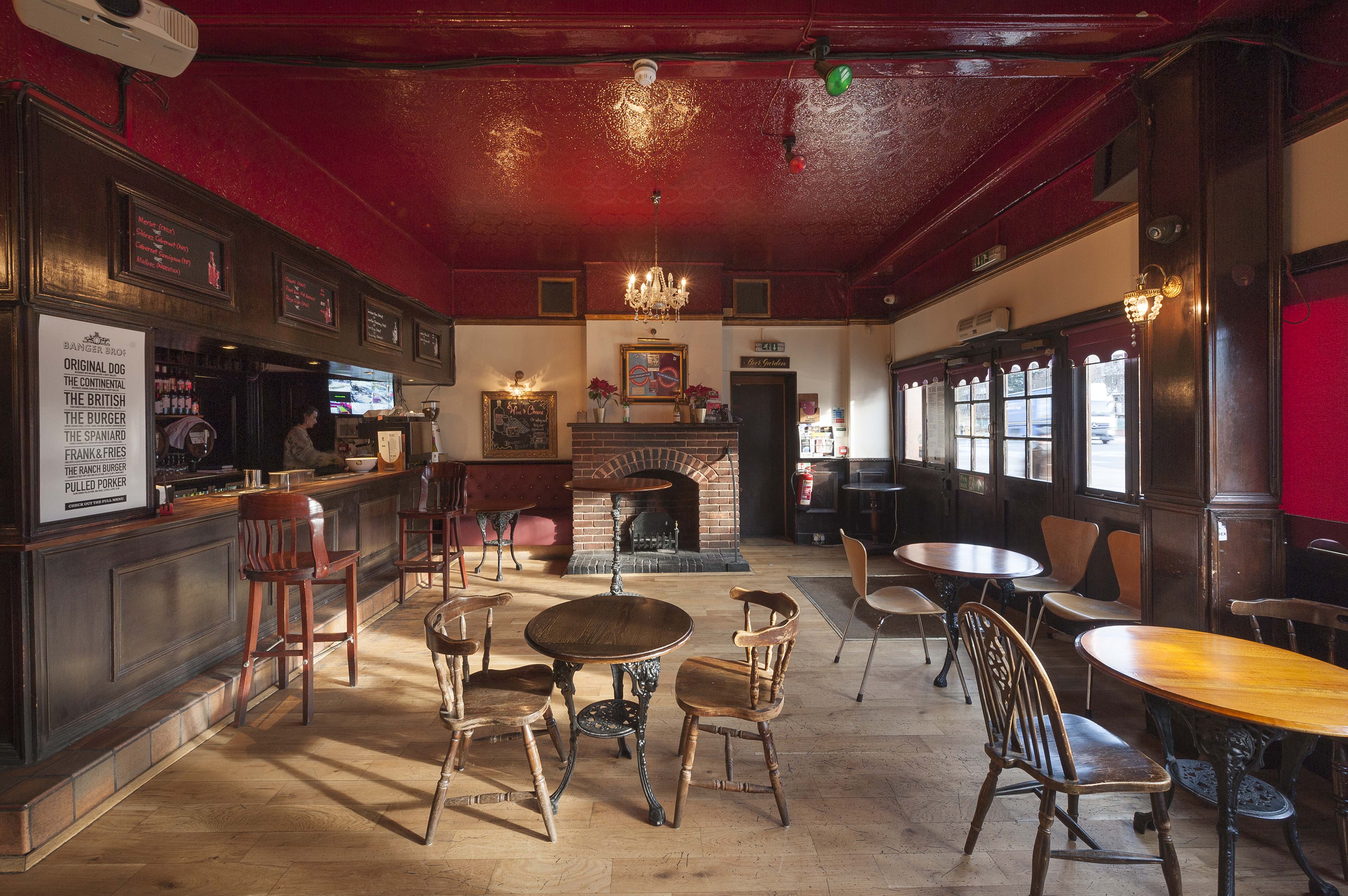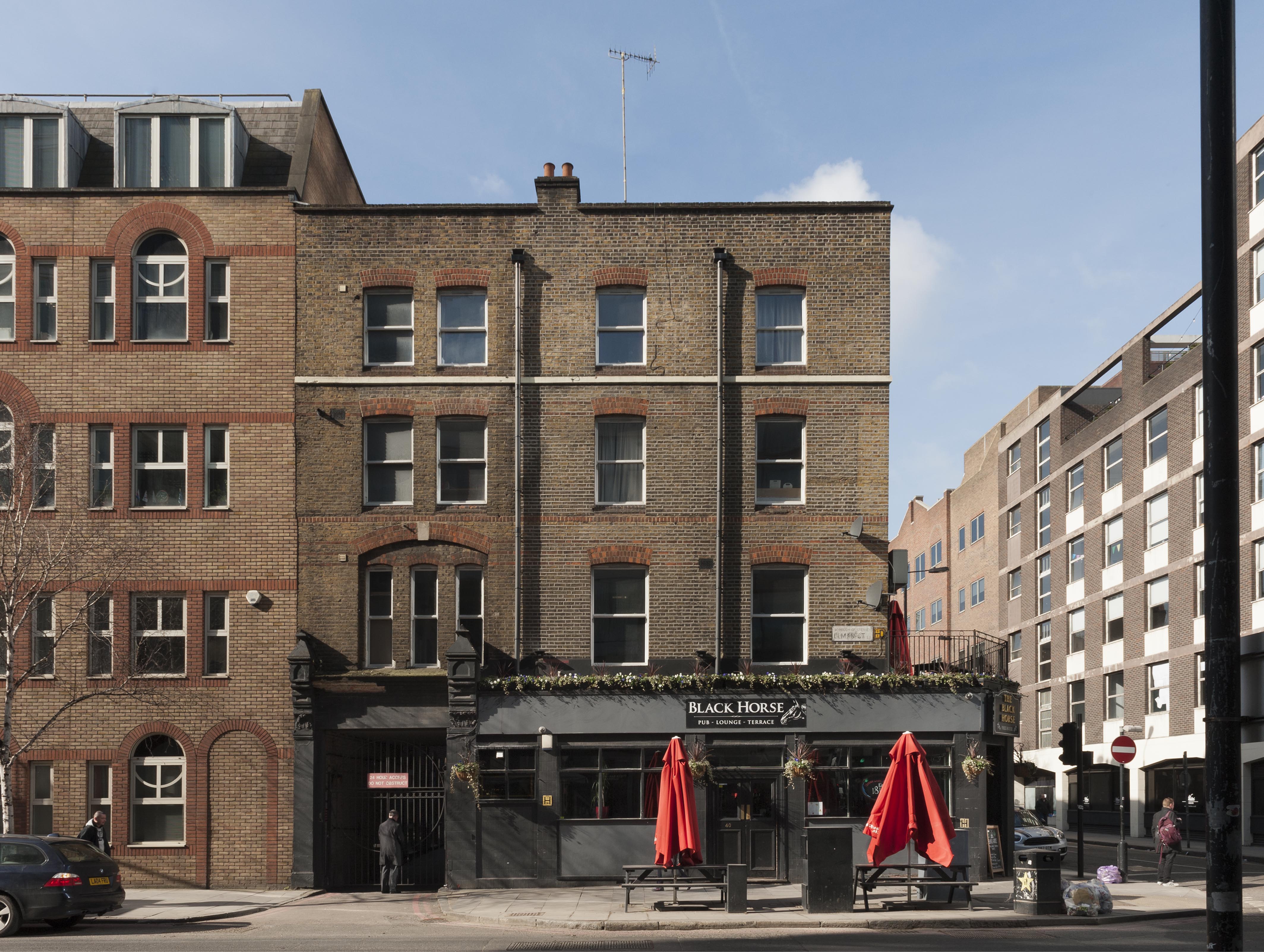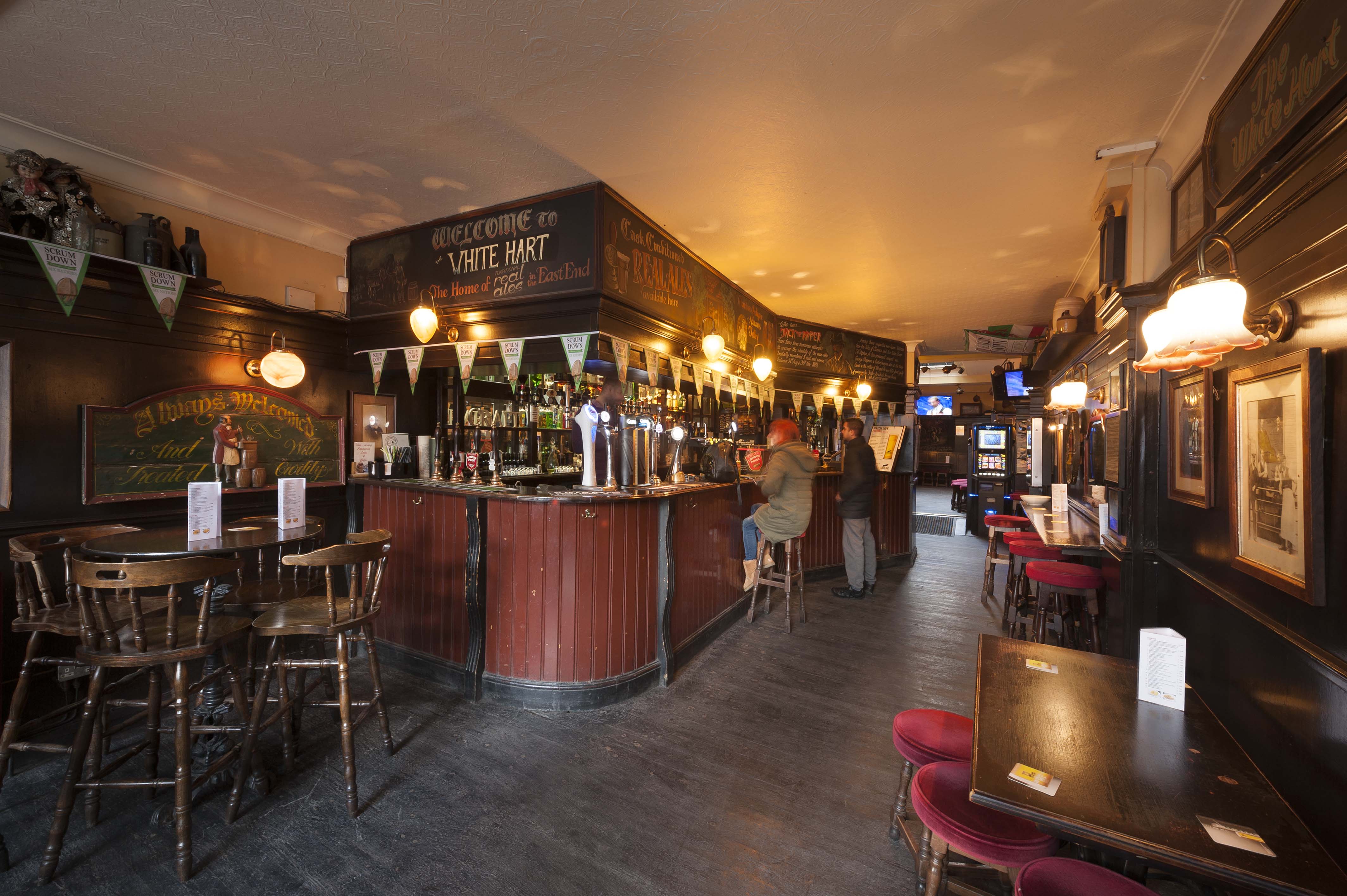Whitechapel pubs (and a brewery)
By the Survey of London, on 13 April 2018
As part of the Survey of London’s ‘Histories of Whitechapel’ project and for eventual publication in our Whitechapel volumes, Derek Kendall has been photographing the area. Lately, through the winter months, he has been concentrating his attention on pubs. These recent photographs illustrate a range of interiors and exteriors, some of better-known pubs and others less well known.

The Princess of Prussia Public House, 15 Prescot Street. Built in 1913 and a good example of an attractively legible Trumans façade. (© Derek Kendall)

Bar Indo, 133 Whitechapel Road. Built in 1854 as The Blue Anchor Public House after its predecessor was destroyed in a fire. Until the 1760s the pub on this site was called the David and Harp. (© Derek Kendall)

Interior of Bar Indo, 133 Whitechapel Road, recast with the front window in 1928 for Charringtons. The Blue Anchor sign is in storage above the entrance lobby. (© Derek Kendall)

View of bar with owners Peter and Katy Clarke. Bar Indo, 133 Whitechapel Road. (© Derek Kendall)

The Blind Beggar Public House, 337 Whitechapel Road. A Tudor ballad about Henry de Montfort, who died in the Battle of Evesham in 1265, imagined that he survived blinded to be rescued by a woman from Bethnal Green, where he ended his days begging. That parish once hosted other pubs of the same name. This establishment’s origins seem to be late seventeenth century. The present building dates from 1894 when it was erected to designs by Robert Spence, the engineer and architect to Mann, Crossman & Paulin. (© Derek Kendall)

The Blind Beggar, 337 Whitechapel Road. The blood-red ceilinged interior has been much remodelled. Latter-day notoriety turns around this pub being the site of the shooting of Georgie Cornell by Ronnie Kray in 1966. (© Derek Kendall)

Exterior of The White Swan Public House, Alie Street, Whitechapel. Originally built in the early nineteenth century, this pub’s fabric has undergone substantial changes since then. (© Derek Kendall)

The Brown Bear Public House, 139 Leman Street. This pub was in existence by 1745 and is said to have been rebuilt in 1830. (© Derek Kendall)

View from the east of The Black Horse Public House, 40 Leman Street. An inn and public house has stood on this site since the late seventeenth century. The present building appears to date from 1879. (© Derek Kendall)

View from the south of The White Hart Public House and Gunthorpe Street Passage. The White Hart is the only long-standing pub left on the north side of the High Street. On the corner of Gunthorpe Street, an alleyway established by the sixteenth century and formerly known as George Yard, it was certainly here by 1723, when sixteen apparently smuggled bushels of coffee ‘concealed in a Load of Faggots’, were confiscated from the yard of the White Hart Inn. The pub was probably rebuilt in the 1770s and its pilastered frontage dates from a modernisation of the 1830s. (© Derek Kendall)

Front bar of the White Hart Public House. The interior is typical Brewers’ Tudor, from further renovations in the 1920s and 1930s, with dark panelling and suburban-deco leaded-glass panels in the roof light in the rear bar. (© Derek Kendall)

View from the south of Albion Yard, formerly The Albion Brewery, 331–335 Whitechapel Road, which grew from origins in 1807 to become one of London’s major breweries under Mann, Crossman & Paulin, a major local employer and supplier up to closure in 1979. The brewery has been included here partly on account of its links to the longer-lived Blind Beggar public house immediately to its east. (© Derek Kendall)

View of the clock tower of Albion Yard, formerly The Albion Brewery, 331–335 Whitechapel Road. The Albion Brewery was established behind the Blind Beggar in 1807. It was rebuilt and extended in 1863–8 and 1894–1902 for Mann, Crossman & Paulin. In 1958 merger with Watney Combe Reid & Co. created Watney Mann but a restructuring scheme led to closure of the brewery in 1979. The building was converted to flats in 1993–5. (© Derek Kendall)

South elevation of Albion Yard, formerly The Albion Brewery, 331–335 Whitechapel Road. As The Buildings of England has it, this ‘brewhouse’ or fermenting house at the rear of the entrance courtyard is ’embellished in show-off Baroque style’. [1] That work of the late 1890s is likely due to Robert Spence, who was then Mann, Crossman & Paulin’s engineer and architect. The boldly sculpted St George and Dragon panel is the brewery’s trademark, a reference to the patron saint of Albion. (© Derek Kendall)
[1] Bridget Cherry, Charles O’Brien and Nikolaus Pevsner, The Buildings of England, London 5: East, 2005, p. 431.
One Response to “Whitechapel pubs (and a brewery)”
- 1
 Close
Close



[…] recent blog post by the Survey of London on Whitechapel’s rich heritage of pubs reminded me of Rowntree’s York enquiry, which […]